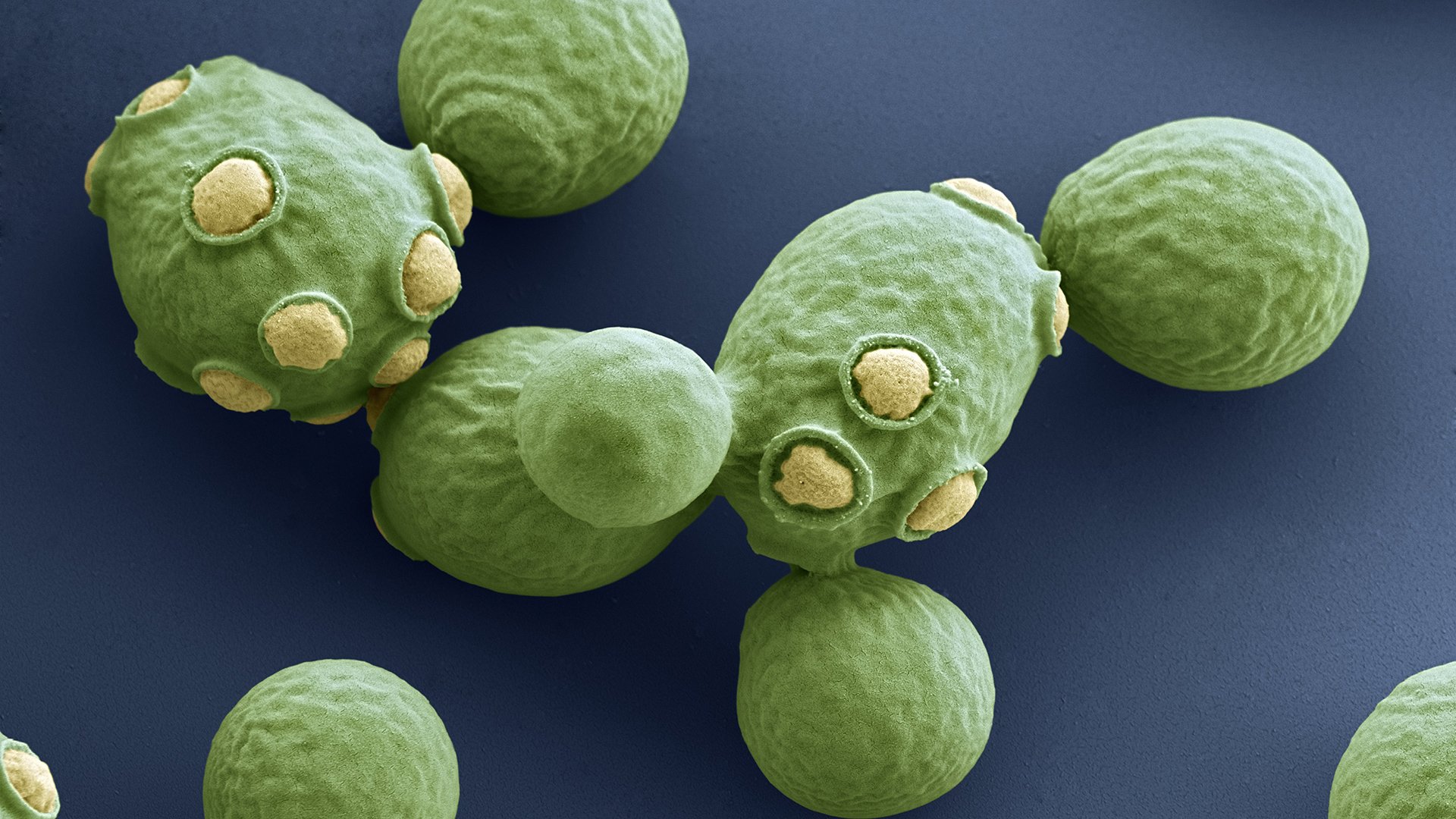Antioxidant in action
Saccharomyces cerevisiaea, also known as baker’s yeast, is a yeast commonly used to bake bread and in the production of many types of beers. Apart from these many uses, the yeast also produces an antioxidant, called glutathion, to protect itself against high temperatures (above 40°C). An antioxidant is a compound that catches free radicals, which are damaging molecules often produced at high temperatures. In this manner the yeasts cleans their environment of these radicals. A single yeast cell does not produce enough glutathion to protect itself, therefore it only works when a high density of yeasts cell produce the antioxidant. This cooperation allows the yeast population to survive at high temperatures.
Adapting to the climate
Climate change is a topic that is currently discussed more than ever before in science. Many questions arise about how microbes can adapt to climate change. This study showed how a yeast-microbe could do so to protect itself against high temperatures. However, the question about as to how other microbes adapt in order to survive remains unanswered. Would you like to know more about different developments in microbiology, visit Micropia.nl .

